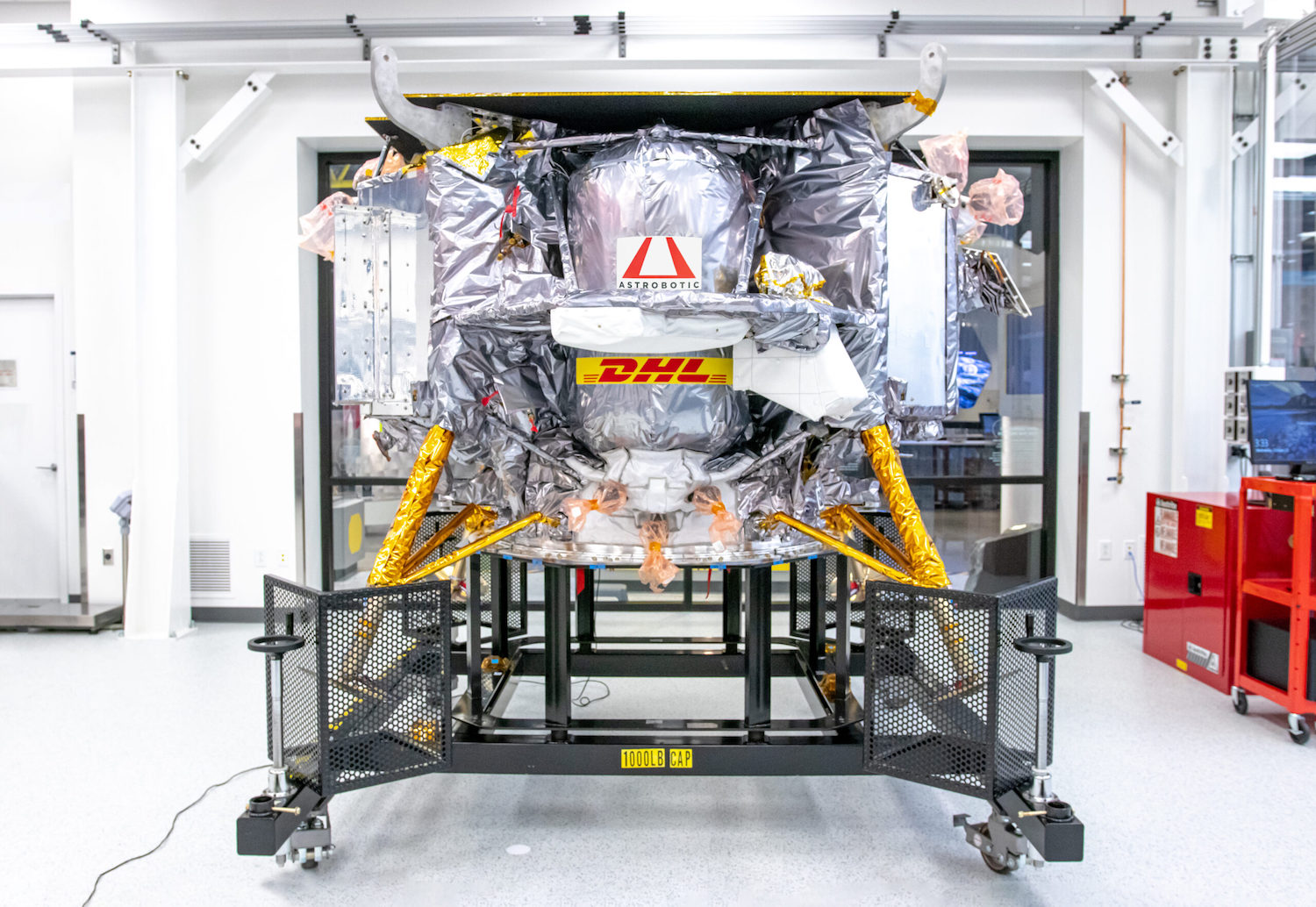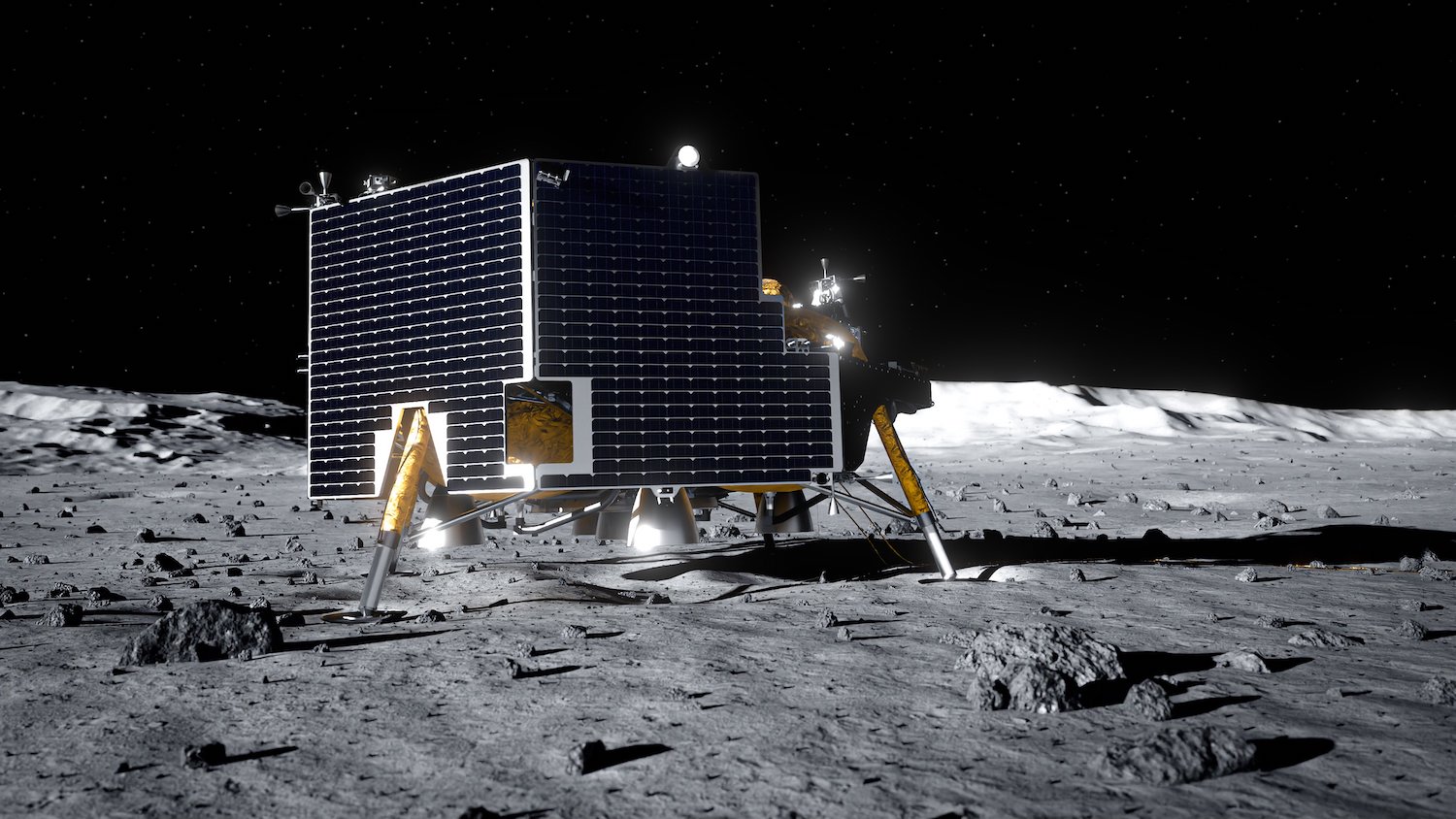
Seven months after its first lunar lander fell short of reaching the Moon, Astrobotic announced Tuesday that the spacecraft was stricken by a valve failure that caused a propellant tank to burst in orbit. The company's next landing attempt, using a much larger spacecraft, will include fixes to prevent a similar failure.
Astrobotic's first Peregrine lander, which the company called Peregrine Mission One, launched January 8 aboard United Launch Alliance's first Vulcan rocket. But soon after separating from the rocket in space, the lander ran into trouble as it stepped through an activation sequence to begin priming its propulsion system.
A review board determined "the most likely cause of the malfunction was a failure of a single helium Pressure Control Calve called a PCV—Pressure Control Valve 2, within the propulsion system," said John Horack, a space industry veteran and professor of aerospace and mechanical engineering at Ohio State University.
Helium was supposed to pressurize Peregrine's propulsion system and force fuel and oxidizer from the lander's onboard storage tanks into the spacecraft's small rocket engines to combust and generate thrust.
"PCV2 suffered a loss of seal capability that was most likely due to a mechanical failure in the valve caused by vibration-induced relaxation between some threaded components that are inside the valve, so a failure deep inside the valve itself," said Horack, who chaired Astrobotic's investigation into the failure of the Peregrine lander.
It didn't take long for the valve malfunction to have catastrophic consequences for Astrobotic's Peregrine lunar lander, which was attempting to become the first US spacecraft since 1972 to achieve a soft landing on the Moon.
"Upon actuating, opening, and closing the PCV2, helium began to flow uncontrollably into the oxidizer tank, and that caused a significant and rapid over-pressurization of the tank," said John Thornton, Astrobotic's CEO. "Unfortunately, the tank then ruptured and subsequently leaked oxidizer for the remainder of the mission.”
Astrobotic's ground controllers, working out of a control center at the company's headquarters in Pittsburgh, acted quickly to stabilize the situation on the spacecraft. The lander's engines used hydrazine fuel mixed with nitrogen tetroxide to generate thrust, but with its diminished supply of nitrogen tetroxide, Peregrine was unable to maneuver into orbit around the Moon and attempt a landing.
But the company kept the lander alive, and ground teams were able to make small adjustments to ensure Peregrine's solar panels pointed toward the Sun to produce power as it arced on a loop that reached approximately the distance of the Moon. Ten-and-a-half days after launch, Earth's gravity pulled it back into the atmosphere, and it burned up over the remote Pacific Ocean.
Astrobotic developed and built the Peregrine lander under contract to NASA, which awarded the company a $108 million contract to deliver a suite of government-sponsored science payloads to the lunar surface. Peregrine Mission One was the first mission launched under the umbrella of NASA's Commercial Lunar Payload Services (CLPS) program, which buys transportation from commercial vendors for science payloads heading to the Moon.
Going to the Moon on a budget
It turns out Astrobotic officials were aware of the risk of a pressure control valve failing on the Peregrine spacecraft. The lander had two of these valves, one controlling the flow of helium into the fuel tank, and another into the oxidizer tank. During ground testing before the mission, the pressure control valve on the fuel side started leaking, so engineers swapped it out for a new one. The similar valve on the oxidizer side, which ended up failing in space, showed no problems during ground tests, according to Sharad Bhaskaran, Astrobotic's mission director for Peregrine Mission One.
Although the pressure control valve on the oxidizer side was the same design, Astrobotic decided not to replace it because doing so would have required disassembling large portions of the Peregrine lander, further delaying the mission's launch, which was already running several years behind schedule.
Tests of a spare pressure control valve that were conducted following the Peregrine mission confirmed it could leak after engineers subjected it to vibrations like those it would experience during a rocket launch.
“You’ve got a threaded component inside the valve," Horack said. "So you can think about a screw and a washer, or any threaded component. And if you shake it sufficiently, you can get some changes in the mechanical configuration that will prevent the valve from seating. And it's pretty much no different than when your sink starts to drip in your kitchen. Water gets through the seal and comes out the other side. In this case, it’s helium and it's high pressure, so it's much harder to confine."
Astrobotic did not identify the third-party vendor who supplied the pressure control valve, but officials said the company is working with its supplier to redesign the component. "It is slightly different than the actual valve that flew on Peregrine, the same vendor, but we worked closely with them to redesign the internal workings," said Steve Clarke, Astrobotic's vice president of landers and spacecraft.

Astrobotic's next lander, named Griffin, is larger and more complex than Peregrine. It will use the redesigned pressure control valves, and Astrobotic will install pressure regulators and so-called latch valves in the helium system on Griffin. These new components would control the flow of helium into the propellant tanks in the event of a similar pressure control valve failure on Astrobotic's next mission, officials said Tuesday.
"We’ve got increased reliability now in the system to mitigate against that single point failure," Clarke said.



3175x175(CURRENT).thumb.jpg.b05acc060982b36f5891ba728e6d953c.jpg)
Recommended Comments
There are no comments to display.
Join the conversation
You can post now and register later. If you have an account, sign in now to post with your account.
Note: Your post will require moderator approval before it will be visible.